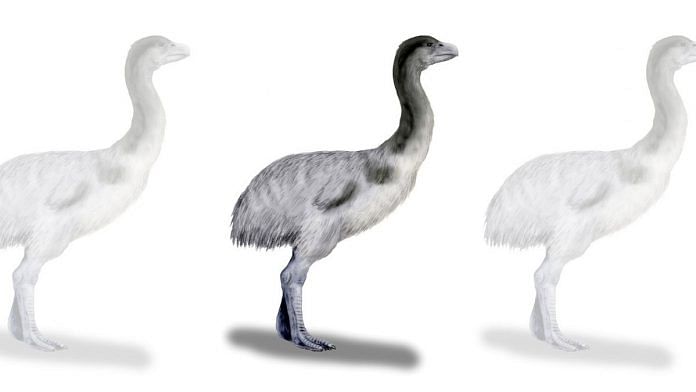New Delhi: Scientists have identified a species of duck like birds, known as the ‘Demon Ducks of Doom’, from giant prehistoric eggs found in Australia.
According to the study by researchers from the University of Copenhagen, some 65,000 years ago, the first human inhabitants in Australia shared their neighbourhood with a two-meter tall, 200 kg bird with a massive beak.
Named Genyornis newtoni, or ‘Demon Ducks of Doom’, these were these were bird that couldn’t fly and laid eggs the size of cantaloupe melons. Ancient humans most likely harvested and enjoyed them as an important protein source, said the study published in the journal PNAS.
The large eggs have been at the center of a controversy since researchers first discovered the 50,000-year-old eggshell fragments 40 years ago. Until recently, it was not known whether the eggs actually belonged to the ‘demon-duck’ family, more formally known as dromornithids (another name for Genyornis newtoni).
Since 1981, researchers from around the world have been uncertain about which bird laid the eggs. Some suggested Genyornis newtoni, while others believed the shells to be from eggs of Progura birds — an extinct member of a group of species called megapodes. Progura were “chicken-like birds”, with large feet and only weighing between five and seven kilograms.
However, analysis of protein sequences from the eggs have clearly shown that the eggshells cannot come from the Progura bird and can only be that of Genyornis eggs, according to the researchers. Read more.
AI system can track health of coral reefs by listening to sounds
By listening and analyisng the sounds of corals reefs, a new artificial intelligence network can track the health of the reefs, a new study has found.
Coral reefs have a complex soundscape — and even experts have to conduct painstaking analysis to measure reef health based on sound recordings.
Scientists at the University of Exeter trained a computer algorithm using multiple recordings of healthy and degraded reefs, allowing the machine to learn the difference. The computer then analysed a host of new recordings, and successfully identified reef health 92 per cent of the time.
The team used this to track the progress of reef restoration projects.
The fish and other creatures living on coral reefs make a vast range of sounds. The meaning of many of these calls remains unknown, but the new AI method can distinguish between the overall sounds of healthy and unhealthy reefs. Read more.
Also read: Grunt, hoo & bark — study shows chimpanzees can string together sounds to form ‘sentences’
Ocean acidification may drastically affect diatoms
Diatoms — a type of algae — may get drastically affected by ocean acidification, a new study has found.
Diatoms are the most important producers of plant biomass in the ocean and help to transport carbon dioxide (CO2) from the atmosphere into the deep ocean and thus regulate our climate.
Diatoms rely on silica, rather than calcium carbonate to build their shells, which is why they were previously thought to benefit from ocean acidification. Ocean acidification refers to a chemical change in seawater, triggered by increasing uptake of CO2, which makes calcification more difficult.
Scientists at GEOMAR Helmholtz Centre for Ocean Research Kiel have now shown that diatoms, which are a type of plankton, are also affected by acidification. Analyses of data from field experiments and model simulations suggest that ocean acidification could drastically reduce diatom populations, they said. Read more.
NASA images show underwater volcano erupting in the Pacific
NASA has revealed that an underwater volcano — which is home to two types of sharks — in the Pacific Ocean has begun to erupt.
Located off the coast of Solomon Islands, the Kavachi Volcano, dubbed Sharkcano by scientists, is one of the most active underwater volcanoes in the Pacific. Its seafloor base is about 3,960 feet deep, and its summit is about 65 feet below sea level.
Satellite images taken by NASA’s Operational Land Imager-2 on Landsat 9 in May show volcanic plumes from underwater visible on the ocean’s surface. NASA said the volcano is known to have explosive eruptions caused by the interaction of magma and water.
Kavachi Volcano is home to two kinds of sharks, including hammerhead sharks, living near the crater.
The constant eruption of the volcano, which has been recorded since 1939, has resulted in islands being created nearby, but NASA says they’ve been eroded and washed away by ocean waves. Read more.
(Edited by Poulomi Banerjee)
Also read: Polly’s got a third leg! Parrots are tripods, use beak as extra ‘limb’ to climb, new study finds



